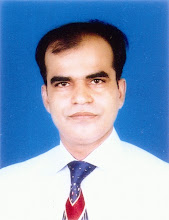By Manzoor Chandio
Published in Sindh Watch in June 2009
Why should we take sides and condemn atrocities wherever they are being committed, with a conviction that “injustice anywhere is a threat to justice everywhere”?
Decades ago, during civil rights movement, Dr Martin Luther King took this stand against racial discrimination in the United States. It would be no exaggeration to say that the same is also the collective wisdom of people of Sindh in southern Pakistan.
Since the start of war on terror, the people of the non-Muslim world have been shown a terrific aspect of Pakistan, which is also home to Sufi Sindhi people. Sindh’s Sufi saint Shah Latif promoted his philosophy of universal brotherhood centuries ago.
The people of Sindh have always stood up for justice and tolerance. Their home, the soil of Sindh, is popular as the land of saints and sages who always preached the message of love and brotherhood.
The world not only highlights the failure of the Muslim world but also points out to a deficiency of an independent Muslim political thought which works out automatically to get the Muslim countries and their people out of ancient thinking.
Sindh has poets like Shah Latif and Sachal Sarmast, who centuries ago, disseminated universal brotherhood. They are the epitome of religious tolerance. Some western scholars conclude that nothing is enlightened with the Muslims through which they can replace obscurantism and extremism. But this is not the case of Sindhi Muslims, who with their Sufi inclination are tolerant to all other religions.
The deficiency of free inquiry and interpretation is so acute among Muslim scholars, that an army General used Wahabi Sect for his own survival and created Taliban who today are the biggest threat to peace. But the people of Sindh rejected Wahabi teachings in Pakistan. Sindhis are the only group of people in Pakistan, who never followed the line of extremist Islam.
For that reason, the extremist Islamabad establishment victimized the people of Sindh. Hundreds of people have been killed and thousands others jailed and sent into exile.
Similar examples of injustice and intolerance have been seen in other parts of the Islamic world. About 300,000 Kurd and Shia Muslims were killed during the Saddam regime in Iraq. The dictator used weapons of mass destruction, not against any non-Muslim country, but against fellow Muslims during the Iran-Iraq war and also used chemical weapons against Kurds in his own country.
Almost five thousand Kurds were killed in just one attack in Halabja in 1988. Iraq fought two wars against fellow Muslim states of Iran in 1980 and Kuwait in 1990.Ironically, Israel deterred the Syrian army from invading Jordan on the pretext of supporting a Palestinian uprising in 1970. Syria occupied Lebanon in 1976 and effectively annexed it after 15 years.
In 1982, Syria massacred 20,000 people in the Muslim Brotherhood with strong hold of Hammas.Nearly 100,000 Muslims have been killed at the hands of Muslims in Algeria. After Dr. King, there were a few free thinkers in the West who challenged the perception and stood by the oppressed. If there were no Noam Chomsky (a Jew) and Edward Said (a Christian), perhaps all the Muslim had been dubbed as terrorists.
This is the time the world must know about Sufi Islam followed by the people of Sindh in Pakistan.During East Pakistan crisis, the extremist establishment projected false ideas of military and totally ignored realities on ground. The military massacred thousands of Bengalese. Today, people of Sindh and Balochistan feel that they are being targeted. The extremists in Islamabad, instead of bridging the appalling development gap that separates the Baloch and Sindhis from other nationalities, launched an action against them.
Somnambulists in Islamabad must understand history that the suppression of own people can only invite the ineluctable wrath of the mighty like the one we are seeing in Iraq and Afghanistan.
The big question before the Pakistani establishment is whether it will ever be able to show its human face?
The collective wisdom of people of Sindh says yes. Before partition of subcontinent, people of Sindh following different religions, such as Islam, Hinduism, Christianity, Judaism, Sikhism and Zorastarism, lived together side-by-side.
Therefore, it is necessary for the world to understand the tolerant face of Islam, which is followed by the people of Sindh.
There are shrines of saints and sages across Sindh and mosques and temples inside one compound.Sindh is the soil where there is no room for Taliban. Despite being part of Pakistan, Sindh is an oasis of peace and tolerance.






